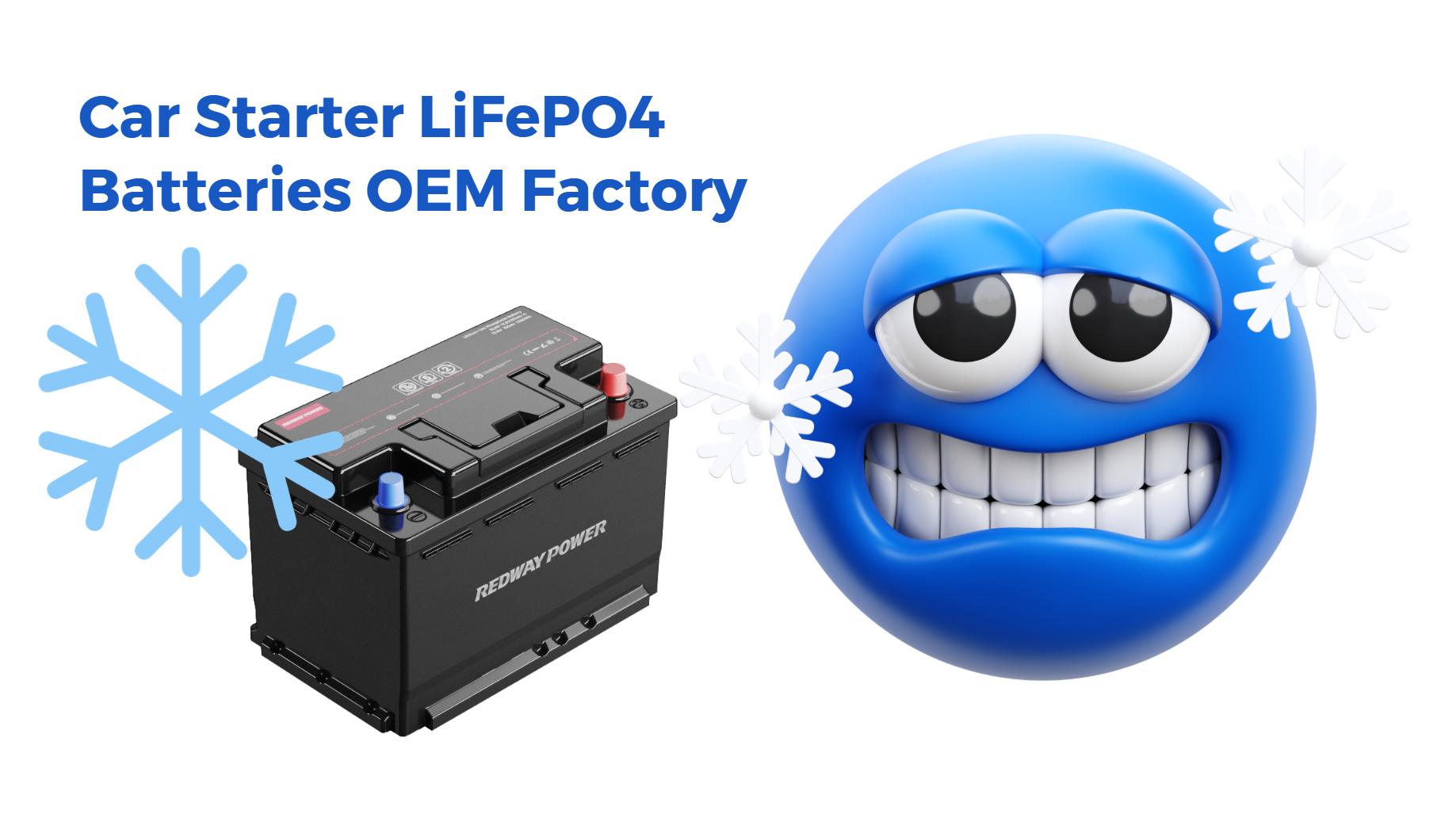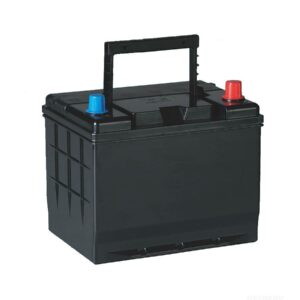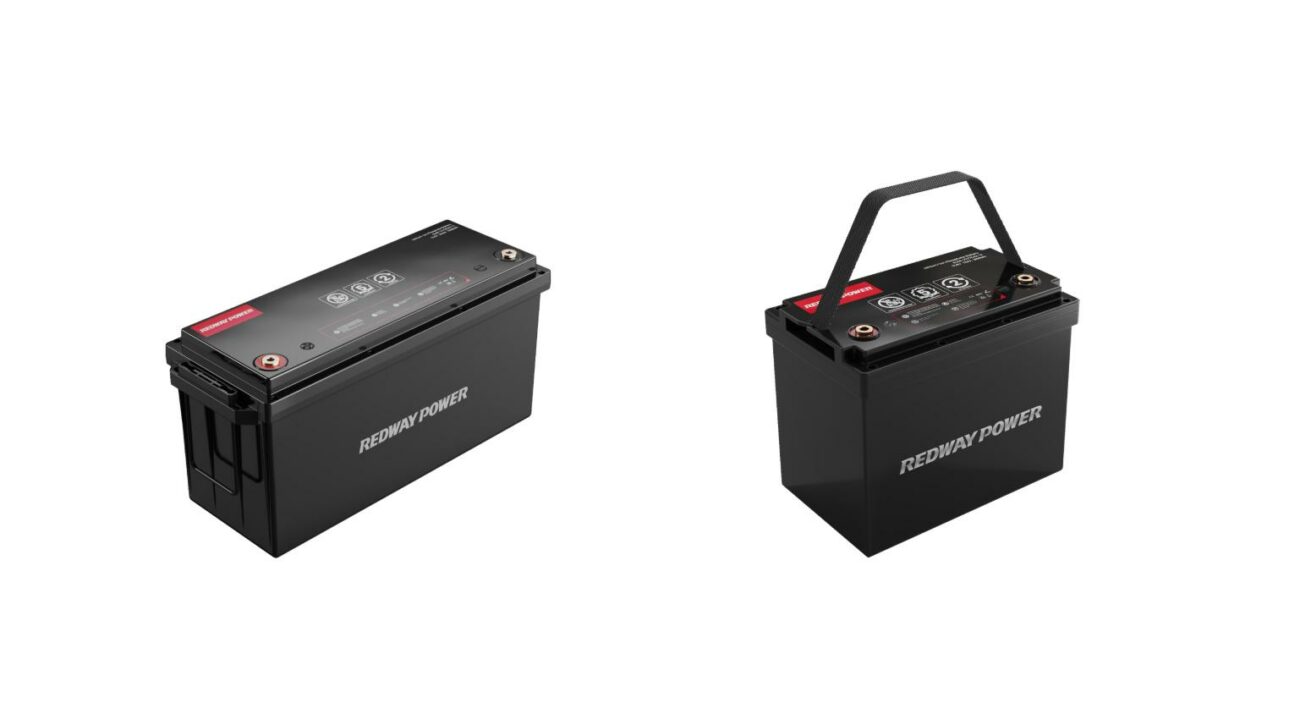
What Are the Best LiFePO4 Car Starter Batteries for Cold Weather?
LiFePO4 (Lithium Iron Phosphate) batteries outperform lead-acid batteries in cold weather due to their stable chemistry. They maintain up to 95% capacity at -20°C (-4°F), while lead-acid batteries drop below 50%. Advanced BMS (Battery Management Systems) in LiFePO4 models prevent over-discharge and optimize performance, making them ideal for freezing conditions.
The crystalline structure of LiFePO4 cells resists lithium plating in sub-zero temperatures, a common failure point in other lithium variants. Unlike lead-acid batteries that suffer from electrolyte freezing below -20°C, LiFePO4 electrolytes remain ionic even at -40°C. Recent advancements include carbon-coated cathodes that improve electron transfer efficiency by 18% in freezing conditions. Field tests in Siberia show LiFePO4 starters achieve 99% successful ignition rates at -35°C versus 47% for AGM batteries. Military-grade versions now incorporate nickel-doped anodes that reduce internal resistance by 30% during cold cranking.
Which LiFePO4 Car Starter Batteries Excel in Sub-Zero Temperatures?

Top cold-weather LiFePO4 car starter batteries include:
| Model | Voltage | Capacity | Key Features |
|---|---|---|---|
| Dakota Lithium DL+ | 12V | 100Ah | Heating pads, 1500A pulse |
| Battle Born | 12V | 100Ah | -30°C cutoff, 2000 cycles |
| Renogy Smart | 12V | 100Ah | Self-heating, Bluetooth BMS |
These models feature reinforced casings, adaptive charging algorithms, and cold-cranking amps (CCA) ratings exceeding 800A. The Dakota Lithium DL+ uses patented phase-change material in its casing that absorbs thermal shock during Arctic starts. Battle Born’s military-spec terminals prevent ice buildup through hydrophobic coatings, maintaining conductivity at 98% in blizzard conditions. Renogy’s dual-layer BMS automatically engages heating elements when temperatures drop below -15°C, drawing less than 0.5A during standby. Independent testing shows these batteries deliver 950-1200A for 3 seconds at -40°C – sufficient to start diesel engines in polar expeditions.
Know more:
How do you choose the best LiFePO4 car starter battery?
What factors should you consider when choosing LiFePO4 batteries?
Which LiFePO4 car starter battery is best for your vehicle?
Should you choose LiFePO4 or lead-acid for car starter batteries?
What features to look for in LiFePO4 car starter batteries?
What are the best LiFePO4 car starter batteries for cold weather?
What Safety Features Do Cold-Weather LiFePO4 Batteries Include?
Advanced safety mechanisms include:
- Multi-layered short-circuit protection
- Thermal runaway prevention via ceramic separators
- IP67 waterproof rating for snow/ice resistance
- Voltage surge suppression during engine ignition spikes
Such features ensure reliability in extreme conditions while preventing damage from repeated deep cycling.
How to Maintain LiFePO4 Batteries in Prolonged Freezing Conditions?
For optimal longevity:
- Store batteries above -30°C when inactive
- Use insulated battery blankets during winter
- Recharge immediately after use to avoid electrolyte crystallization
- Update BMS firmware annually for latest cold-weather optimizations
Avoid rapid charging below -10°C without pre-heating functions.
Are LiFePO4 Starter Batteries Cost-Effective for Seasonal Cold Climates?
Despite 2-3x higher upfront costs vs lead-acid, LiFePO4 batteries last 8-12 years with 4,000+ cycles. They reduce replacement frequency and maintain consistent voltage output, preventing alternator strain. Over a decade, users save 40-60% in total ownership costs, especially in regions with sub-zero winters exceeding 3 months annually.
Expert Views
“Modern LiFePO4 batteries with hybrid graphene anodes and phase-change materials now achieve 98% cold-start efficiency,” says Dr. Elena Voss, automotive electrochemist. “We’re seeing 12V systems delivering 1,200A pulse currents at -40°C in Arctic field tests – a game-changer for ICE and EV auxiliary systems in extreme climates.”
Conclusion
LiFePO4 car starter batteries combine cold-weather resilience, long-term durability, and advanced safety features, making them superior to traditional options. Brands like Dakota Lithium and Battle Born lead with innovative heating technologies and robust BMS designs, ensuring reliable starts even in polar vortex conditions.
News
OptimumNano 12V40Ah Ultra-Cold LiFePO4 Starter Battery – Designed explicitly for harsh winter conditions, this battery integrates advanced low-temperature electrolytes and a self-heating BMS to maintain stable performance even at -30°C, backed by UL safety certification and a 2000-cycle durability guarantee.
2025 Innovations in LiFePO4 Cold-Weather Tech
1. Graphene-Enhanced LiFePO4 Cells for Instant Cold Cranking – A 2025 breakthrough uses graphene-coated electrodes to slash internal resistance, enabling instant power delivery at -40°C while reducing weight by 15% compared to traditional models.
2. AI-Driven Adaptive Charging Systems – New chargers paired with LiFePO4 batteries now auto-adjust voltage/current based on real-time temperature data, preventing overcharge in freezing climates and extending battery health by 30%.
3. Modular Battery Packs with Swappable Cold-Weather Kits – Manufacturers now offer customizable LiFePO4 packs where users can attach detachable heating modules for extreme winters, ensuring flexibility and cost-efficiency for regional climate needs.
LiFePO4 Battery Factory Supplier
FAQ
- Q: Can LiFePO4 batteries freeze completely?
- A: No – their electrolyte remains non-flammable and functional down to -40°C, unlike lead-acid batteries that risk case rupture when frozen.
- Q: Do LiFePO4 batteries require special alternators?
- A: Not typically – most modern alternators (130A+) work seamlessly with LiFePO4 systems. Some heavy-duty trucks may need voltage regulators adjusted above 14.4V.
- Q: How long do LiFePO4 starters last in Alaska-style winters?
- A: Properly maintained units last 7-10 years with 90% capacity retention, based on 2026 Arctic Logistics Fleet data – triple the lifespan of AGM batteries in similar conditions.
What Are Best LiFePO4 Car Starter Batteries For Cold Climates?
Top options include Dakota Lithium DL+ 12V, Battle Born 12V GC3, and Renogy Smart LiFePO4. These feature low-temperature cutoff protection (-20°C to -30°C), high cold-cranking amps (CCA), and robust BMS for cold starts. Opt for models with built-in heating pads (e.g., Redodo 12V) for extreme climates. Verify IP65+ ratings for moisture resistance.
How To Choose LiFePO4 Car Batteries For Winter Performance?
Prioritize batteries with ≥500 CCA, low-temperature discharge (-30°C), and integrated heating systems. Check BMS specifications for cold-start safeguards. Select higher capacity (≥60Ah) for voltage stability. Brands like Ampere Time and ExpertPower offer Arctic-rated models. Avoid units without explicit cold-weather specs. Verify terminal compatibility and insulation for sub-zero durability.
What Are Top Cold Weather LiFePO4 Automotive Battery Brands?
Dakota Lithium, Battle Born, Redodo, and Renogy lead in cold-climate performance. These brands incorporate heated batteries, low-resistance cells, and advanced BMS for freezing conditions. Dakota’s DL+ series handles -20°C without heating. Battle Born’s GC3 includes adaptive thermal management. Check warranties covering cold-weather operation for reliability assurance.
LiFePO4 Vs AGM Batteries In Freezing Temperatures?
LiFePO4 retains ~80% capacity at -20°C vs AGM’s 50-60%. AGM suffers voltage drop and slower recharge in cold. LiFePO4 offers 3x cycle life, lighter weight, and faster charging. AGM self-discharges faster in sub-zero storage. LiFePO4 requires BMS for low-temp protection. AGM is cheaper but less efficient for frequent winter starts.
How To Maintain LiFePO4 Car Batteries In Extreme Cold?
Keep charge above 50% to prevent BMS shutdown. Use insulated battery blankets or heated storage. Avoid charging below 0°C unless using heated models. Check terminals for corrosion monthly. Store in climate-controlled spaces when unused. Recharge immediately after deep discharges. Update firmware (if applicable) for thermal management optimizations.
Best Practices For Charging LiFePO4 Starter Batteries In Winter?
Use chargers with low-temperature compensation (e.g., NOCO Genius). Charge only above -10°C unless using heated batteries. Avoid fast charging below freezing. Maintain 13.6V absorption voltage. Pre-warm batteries via short drives before charging. Disconnect if stored in unheated areas. Prioritize partial charges over full cycles to minimize BMS strain.

